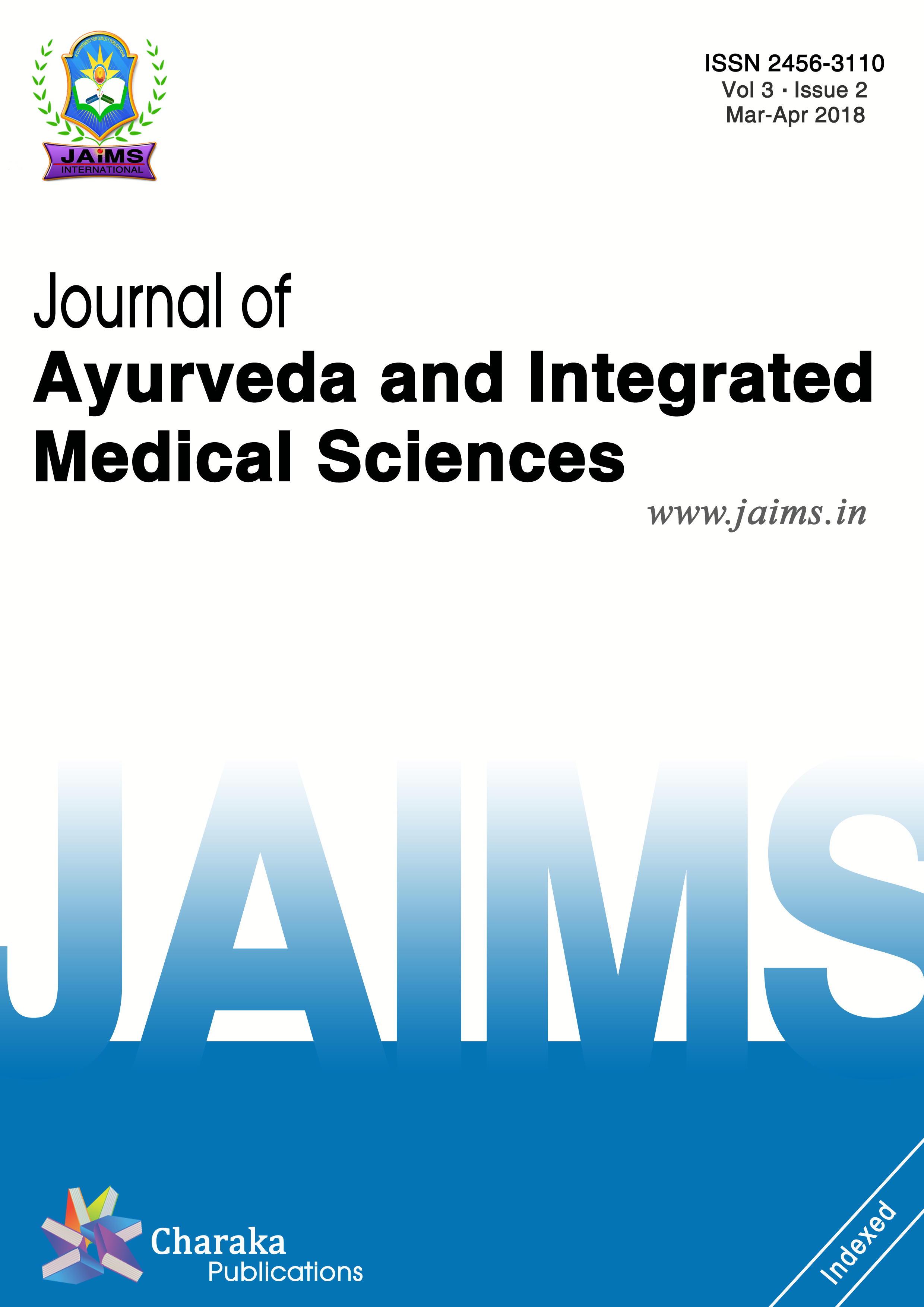An Ayurvedic approach towards Koshta Shakhashrita Kamala w.s.r. to Alcoholic Hepatitis - A Case Report
DOI:
https://doi.org/10.21760/jaims.v3i02.392Keywords:
Alcoholic Hepatitis, Ayurvedic Management, Koshta Shakhashrita KamalaAbstract
Alcohol consumption has been contributing 47% mortality all around the globe, and the liver disease rates are steadily increasing over the years. Along with alcoholic consumption, modern day life style and food habits contribute to the etiology of Alcoholic hepatitis. The symptomatology include nausea, loss of appetite, fatigue, jaundice, abdominal pain, yellowish discolouration of urine and sclera etc. It has been a challenge to treat the condition because both management of symptoms and withdrawal from the alcohol intake should go hand in hand. In Ayurveda this condition can be considered under Koshta Shakhashrita Kamala where the symptoms are analogous to alcoholic hepatitis. In this case, the subject presented with complaints of yellowish discolouration of sclera and urine, abdominal pain, nausea and general weakness since 15 days and was having h/o alcoholic consumption since 18 years. Elevated levels of serum bilirubin, SGOT, SGPT, ESR and prothrombin time and reduced level of WBC count and platelets were observed in laboratory investigation. Ayurvedic classical method of treatment was given to the subject and analysis of subjective and objective parameters were done before and after treatment.
Downloads
References
Agnivesa, Charaka, Cakrapanidatta. Sutrasthana; Maharogaadhaya: Chapter 16, Verse 40. Charaka Samhita. Varanasi: Chaukamba Sanskrit Series Office; 2007. p. 528.
Agnivesa, Charaka, Cakrapanidatta. Chikitsasthana; Panduroga Chikitsa: Chapter 16, Verse 40.Charaka Samhita. Varanasi: Chaukamba Sanskrit Series Office; 2007. p. 528.
Acharya Sarangadharas Sarangadhara Samhita, Hindi commentary by PanditParameshwarSastri, Madhamyaghanda, Gutikaprakarana: Chapter 7, Verse 23, Chaukamba Orientalia; reprinted 2012. p. 199.
Vagbhatas Astanga Hridya, Translated by prof. K.RSrikantha Murthy, Third edition. Krishnadas Academy.varanasi, 2001.p447.















